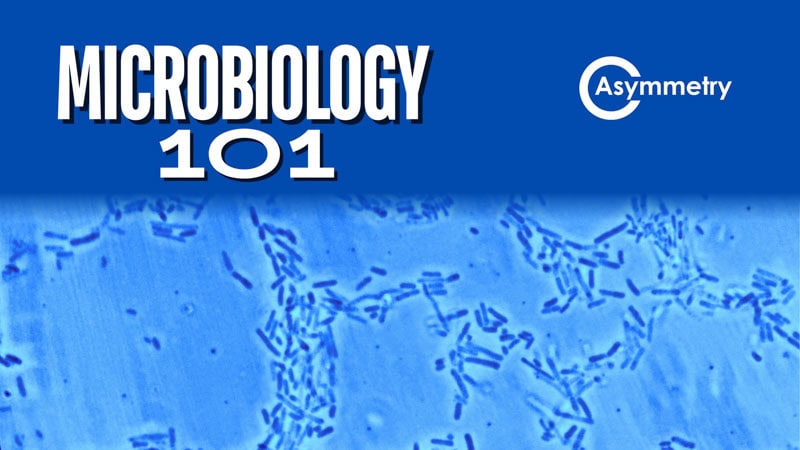Understanding the Differences and Similarities Between Bacteria and Fungi
In the world of microorganisms, bacteria and fungi are among the most essential and widely studied organisms, especially in fields like agriculture, biotechnology, and environmental science. Understanding the fundamental differences and similarities between these two groups can help us better harness their potential in a variety of applications. In this post, we will explore the distinctions and commonalities between bacteria and fungi, focusing on their growth, structure, metabolites, and uses, with a particular emphasis on the cultures we offer, such as Bacillus, Panarchete, and Trichoderma.
Size and Structure
Bacteria and fungi differ significantly in size and cell structure. Bacteria are generally much smaller, ranging from 0.5 to 5 micrometers in size. In contrast, fungal cells are usually larger, with yeast cells (a type of fungus) ranging from 2 to 10 micrometers, and multicellular fungi, like molds, growing to visible sizes, sometimes spanning several centimeters in their mature forms.
Structurally, bacteria are prokaryotic organisms, meaning they lack a true nucleus and other membrane-bound organelles. They have a simpler cellular organization with a peptidoglycan-based cell wall, which helps maintain their shape and protect them from environmental stress. Bacteria, such as those from the Bacillus genus, can also form spores as a survival mechanism under harsh conditions.
Fungi, on the other hand, are eukaryotic organisms, meaning they have a defined nucleus and complex organelles within their cells. Their cell walls are composed of chitin, a sturdy and flexible compound, different from the peptidoglycan found in bacteria. Fungi grow either as single-celled yeasts or multicellular molds, which produce a network of filamentous cells called hyphae, forming a mycelium.
Growth Patterns
The growth patterns of bacteria and fungi differ not only in terms of size but also in how they reproduce and expand. Bacteria typically reproduce through binary fission, a process where one cell divides into two identical daughter cells. Under favorable conditions, this allows bacteria to grow rapidly, often reaching exponential growth rates. This rapid multiplication is one reason why bacteria, like Bacillus strains, are used in various biotechnological applications,including soil inoculants, biofertilizers, and biopesticides.
Fungi, in contrast, grow more slowly. They can reproduce both sexually and asexually, depending on environmental conditions. Fungi like Trichoderma and Panarchete often grow by extending hyphae, which form a network that absorbs nutrients from the surrounding environment. This slower, but extensive growth allows fungi to play vital roles in breaking down organic matter and recycling nutrients in natural ecosystems.
Metabolites
Both bacteria and fungi produce a wide variety of metabolites, many of which are useful in agriculture and industry. Bacterial metabolites, such as those produced by Bacillus species, often include antibiotics (e.g., bacitracin), enzymes, and organic acids. These metabolites can suppress plant pathogens, enhance nutrient uptake, or promote plant growth. For instance, Bacillus cultures are commonly used in agricultural blends for their biocontrol and plant growth-promoting properties.
Fungal metabolites, like those secreted by Trichoderma species, include enzymes such as cellulases and proteases, as well as compounds with antimicrobial properties. Trichoderma is widely used in agriculture for its ability to outcompete plant pathogens, enhance root growth, and improve plant resistance to stress. In addition, some fungi produce secondary metabolites, such as mycotoxins, which can either benefit or harm crops, depending on the strain and the context of their use.
Oxygen and Environmental Requirements
Bacteria and fungi also differ in how they interact with their environment, particularly with regard to oxygen requirements. Bacteria can be classified as aerobic (requiring oxygen), anaerobic (not needing oxygen), or facultative (able to survive in both environments). For instance, Bacillus species are typically aerobic but can tolerate low oxygen conditions, making them adaptable in various soil environments.
Fungi, on the other hand, are mostly aerobic, relying on oxygen for their growth. However, some fungi can grow in low-oxygen environments, particularly in their hyphal state, which makes them effective in decomposing organic material in soil or compost.
Applications and Uses
Both bacteria and fungi have critical roles in industrial and agricultural settings. Bacterial cultures, such as Bacillus, are commonly used in blends with fungal cultures to enhance soil health, combat plant diseases, and promote robust plant growth. These bacterial strains are particularly effective at producing metabolites that suppress harmful microbes and improve nutrient cycling.
Fungal cultures, such as Trichoderma and Panarchete, complement bacterial cultures by breaking down organic matter, promoting root health, and acting as natural biocontrol agents. When combined with bacteria, these fungal strains can create synergistic effects, enhancing overall plant resilience and growth.
Conclusion
In summary, while bacteria and fungi differ significantly in size, structure, growth patterns, and metabolites, both play indispensable roles in nature and industry. At our company, we offer a range of bacterial cultures, such as Bacillus, alongside fungal cultures , to provide versatile and effective solutions for agriculture. Whether used independently or in blends, these cultures help enhance soil health, protect crops, and promote sustainable growth.



